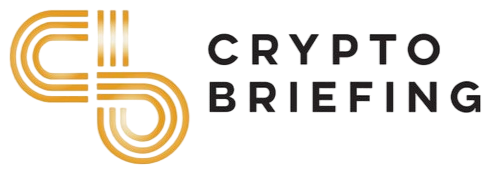In the world of cryptocurrencies, Bitcoin undoubtedly reigns supreme as the pioneer and most well-known digital asset. However, the crypto universe extends far beyond Bitcoin, with thousands of alternative coins, commonly referred to as "altcoins," offering a diverse range of features and applications. This article embarks on a journey to explore the vibrant and evolving landscape of cryptocurrencies beyond Bitcoin, shedding light on some of the most notable altcoins and the innovative ideas they bring to the table.
To truly appreciate the significance of altcoins, it's essential to first acknowledge the trailblazing role played by Bitcoin. Created in 2009 by the pseudonymous Satoshi Nakamoto, Bitcoin introduced the concept of a decentralized, peer-to-peer digital currency. Its blockchain technology offered an immutable ledger, enabling secure and transparent transactions without the need for intermediaries.
Bitcoin's limited supply and decentralization quickly garnered attention, leading to its meteoric rise in value. It became synonymous with digital gold, attracting investors and enthusiasts worldwide. Yet, Bitcoin's primary use case remains as a store of value and a digital alternative to gold, with its transaction capabilities limited compared to some of its successors.
II. Ethereum and Smart Contracts
Ethereum, launched in 2015 by Vitalik Buterin, represents a significant departure from Bitcoin's singular focus. Ethereum's blockchain introduced the concept of smart contracts, self-executing contracts with the terms of the agreement directly written into code. This innovation opened the door to a wide range of decentralized applications (DApps) built on the Ethereum platform.
Smart contracts enable automated and trustless transactions, making Ethereum a hub for decentralized finance (DeFi), decentralized exchanges (DEXs), and non-fungible tokens (NFTs). Ethereum's versatility has made it a foundational component of the crypto ecosystem, driving significant adoption and development in the space.
III. Ripple and Cross-Border Payments
Ripple, often referred to as XRP, emerged with a specific mission: to revolutionize cross-border payments. Unlike Bitcoin and Ethereum, Ripple is not mined; instead, it operates on a more centralized model. Ripple's blockchain and digital token, XRP, facilitate near-instant cross-border transactions at a fraction of the cost of traditional banking systems.
Financial institutions have shown interest in Ripple's technology, using it to enhance the efficiency of their international money transfers. The focus on real-world use cases sets Ripple apart in the crypto landscape.
IV. Litecoin and Faster Transaction Speeds
Litecoin, created by Charlie Lee in 2011, shares many similarities with Bitcoin but boasts faster transaction confirmation times. It has earned the moniker "silver to Bitcoin's gold" and is often used for smaller and quicker transactions. Litecoin's ability to process transactions more rapidly has endeared it to users looking for swift and cost-effective digital payments.
V. Binance Coin (BNB) and the Rise of Exchange Coins
Binance Coin (BNB) is the native cryptocurrency of the Binance exchange, one of the largest and most popular cryptocurrency exchanges globally. BNB has evolved beyond a simple trading fee discount token to become a multifaceted asset. It can be used for various purposes within the Binance ecosystem, including trading, staking, and participating in token sales on the Binance Launchpad.
The success of BNB has inspired other exchange-based tokens, such as Huobi Token (HT) and OKEx (OKB), highlighting the potential for cryptocurrencies to serve as integral components of their respective exchange platforms.
VI. Cardano and a Scientific Approach
Cardano, founded by Charles Hoskinson, takes a rigorous and scientific approach to blockchain technology. It focuses on providing a secure and scalable platform for the development of smart contracts and DApps. Cardano's multi-layer architecture separates the settlement layer from the computation layer, enhancing flexibility and scalability.
With a commitment to peer-reviewed research and academic collaboration, Cardano aims to address some of the scalability and sustainability issues that have plagued other blockchain projects.
VII. Solana and Speedy DeFi
Solana is gaining attention for its exceptional speed and scalability. Its blockchain is designed for high-performance decentralized applications, particularly in the DeFi sector. Solana's unique consensus mechanism, called Proof of History (PoH), enables rapid transaction processing, making it an attractive option for DeFi developers and users.
VIII. The Importance of Utility Tokens
Many altcoins serve as utility tokens within their respective ecosystems. For example, Chainlink (LINK) facilitates data oracles that connect smart contracts with real-world data. Tezos (XTZ) allows token holders to participate in network governance decisions. These utility tokens play crucial roles in enabling specific functions within their blockchain networks.
IX. Challenges and Considerations
While the world of altcoins is filled with innovation and potential, it's essential to recognize the challenges they face. These include regulatory uncertainties, security vulnerabilities, and the volatility inherent in many altcoin markets. Investors and users should conduct thorough research and exercise caution when engaging with altcoins.
X. Conclusion
Beyond Bitcoin, the crypto landscape is a diverse and dynamic ecosystem filled with innovation and promise. Altcoins like Ethereum, Ripple, Litecoin, Binance Coin, Cardano, Solana, and many others each bring their unique strengths and use cases to the table. As the crypto world continues to evolve, it is clear that digital assets and blockchain technology have the potential to revolutionize finance, decentralized applications, and industries far beyond our current imagination. The future of cryptocurrencies is not limited to one coin; it is a rich tapestry of possibilities waiting to be explored.

.jpg)